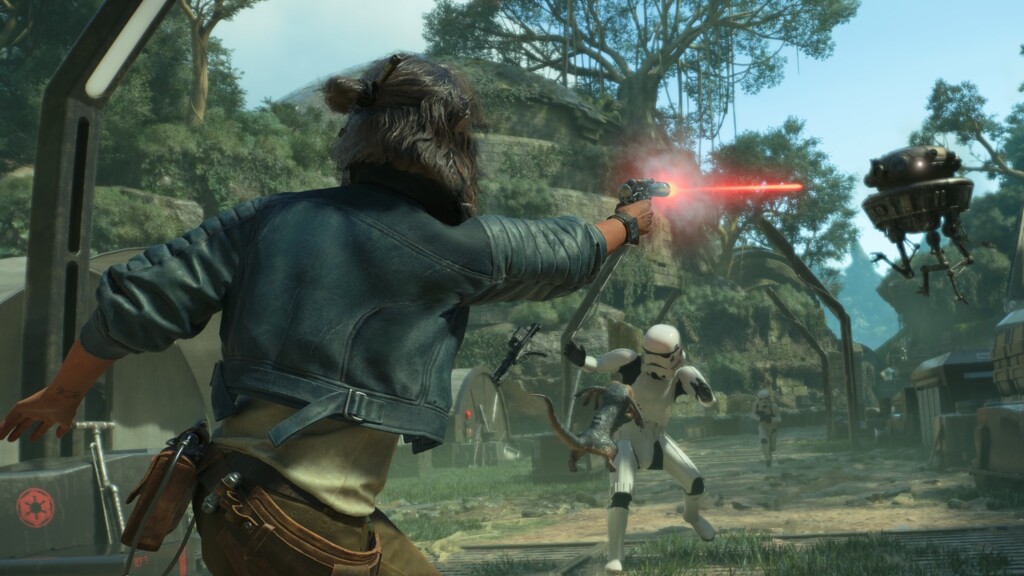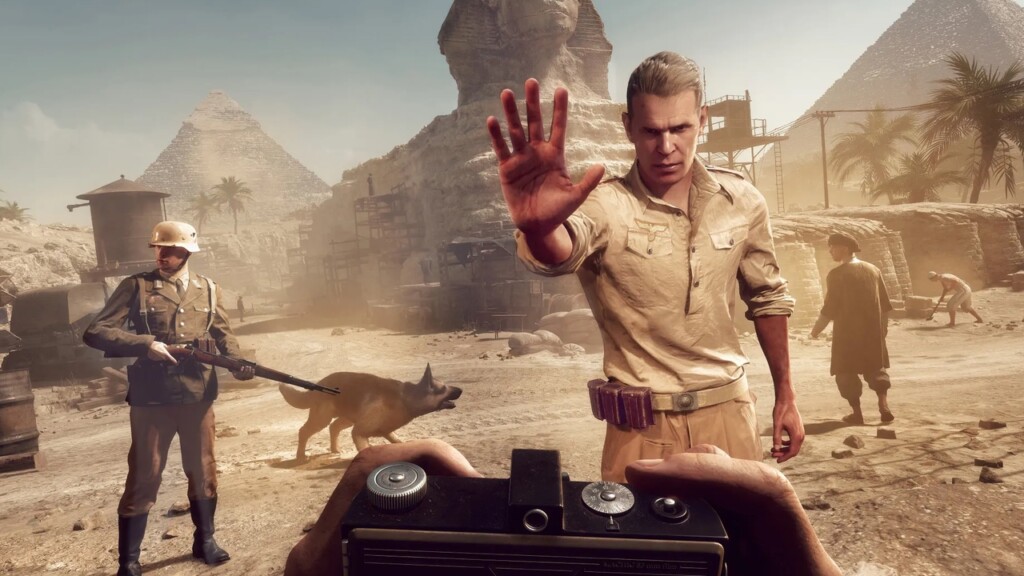While the Hollywood machine spins its wheels in nostalgia, two recent video games take Star Wars and Indiana Jones into fresh territory.
There’s something risky about revisiting the stories that shaped your youth. Sometimes, you experience a warm embrace of nostalgia. Other times, you’re left wondering if the magic was ever really there to begin with. For me, Star Wars and Indiana Jones were foundational. I look back fondly on Saturday afternoon viewings of well-worn VHS tapes and creating my own exciting adventures with Palitoy action figures.
But these franchises aren’t relics to remember anymore. They are an ever-present part of the pop culture content machine. As a result – and I know I’m not alone in feeling this way – the light has dimmed. The industry’s trend of extracting every bit of value from beloved IP has led to some of my favourite franchises chasing shadows of themselves, rehashing old beats without offering much new.
And yet, two video games released in 2024 managed to buck that trend.
Ubisoft’s Star Wars Outlaws and Bethesda’s Indiana Jones and the Great Circle capture why I fell in love with these worlds, but instead of merely rehashing the past, they bring a fresh approach. They trade in nostalgia but they don’t wallow in it. They use nostalgia not as a crutch, but as a compass, pointing to familiar territory while leading us somewhere new.

A scoundrel’s galaxy
Set between The Empire Strikes Back and Return of the Jedi, Star Wars Outlaws drops us into a galaxy at its most chaotic. The Empire’s grip is tightening, the Rebellion is on the ropes, and criminal syndicates are thriving in the shadows. It’s classic Star Wars but told from a new angle.
Protagonist Kay Vess is not a Jedi, a chosen one, or the secret child of anyone important. She’s a thief with a sharp tongue, a loyal alien companion, and debts to settle. In short, she’s the kind of rogue who would’ve thrived in the Mos Eisley cantina. She’s a stand-in for Han Solo, sure, but crucially, she’s not just Han Solo in new boots. Vess shares a scrappy charm with Solo, but she has her own distinct motivations that propel her forward.

Star Wars Outlaws recreates the dirty, lived-in feel that defined the original trilogy, but its open-world design cracks open our lens on the galaxy. Rather than being told about its tensions, you see them, feel them, and witness their effects all around you. The result is a world that feels alive, oppressed, volatile, and dangerous to live in.
This type of environmental storytelling isn’t new to the open-world genre, but in the context of Star Wars, it feels transformative. These lived-in worlds – and the emergent events you encounter – allow the player not just to observe, but to inhabit. There’s plenty of fan service, of course. You’ll spot it tucked into corners and nodding from behind the bar. But here, a jug of blue milk doesn’t detract from the overall experience. It enhances it.
And because you play the role of a scoundrel, the game also has a lightness of touch, a sense of fun, of peril, and of scraping by. This is something that many recent Star Wars productions either fail to accomplish or choose not to emphasise in a wearying effort to be gritty and “grown-up.”
Ubisoft’s open-world formula has its critics, but when applied to the Star Wars universe, it gains character and texture. It makes a galaxy far, far away feel strikingly close, tangible, and new.

Under the fedora
Meanwhile, back on Earth, Indiana Jones and the Great Circle feels more in tune with the spirit of the original trilogy than the recent Dial of Destiny ever manages.
The obvious path for an Indiana Jones video game is the one taken by Core Design and Naughty Dog with Tomb Raider and Uncharted. But with Indiana Jones and the Great Circle, developer MachineGames breaks from expectation by delivering a measured, studious adventure told from a first-person perspective.
While Star Wars Outlaws focuses on placing the player within a vast galaxy to absorb, Indiana Jones and the Great Circle takes a different approach by immersing the player within Indy himself. It’s a brave choice of perspective, but one that serves the character’s personality and spirit rather than relying on the franchise’s iconography.
The game understands that Indiana Jones isn’t about spectacle alone, it’s about grit, timing, self-doubt and barely pulling it off. Every grunt, stumble, and clumsy punch is a reminder that Indy is no superhero. He’s cocky, flawed, often lucky, and always improvising. Instead of just watching him escape danger, the first-person perspective makes you feel the thrill and humour of near-failure.
And when he’s not punching Nazis, Indy’s got his nose buried in maps, documents, and ancient artifacts. He’s deciphering puzzles, piecing together clues, and nerding out over history. The game’s real trick is taking a perspective typically reserved for shoot-to-kill mechanics and transforming it – quite remarkably – into a character study.

Star Wars Outlaws and Indiana Jones and the Great Circle both understand that the best kind of nostalgia is active. These games remind us why we cared in the first place, but also give us reasons to keep caring by offering fresh perspectives on familiar motifs.
Outlaws captures a sense of place; The Great Circle captures a sense of who Indy really is. One grounds you in the world; the other grounds you in the character.
In a landscape where cherished franchises are often treated like museum exhibits, these games invite us to play, just like I did with my action figures. They let us explore, stumble, fight, and improvise within the familiar worlds we adore. In doing so, they remind me why I fell in love with these stories in the first place, and without relying on empty gestures or awkward origin stories.
And both games serve as a reminder of a time when heroes didn’t need to be super. Indiana Jones and Kay Vess are flawed, fallible human beings, and their exploits are all the more compelling because of it. Their victories feel earned, not inevitable. And in a world of posturing invincible protagonists, that’s another lesson from the past worth noting.
Read about the creation of Star Wars Outlaws‘ amazing soundtrack.






